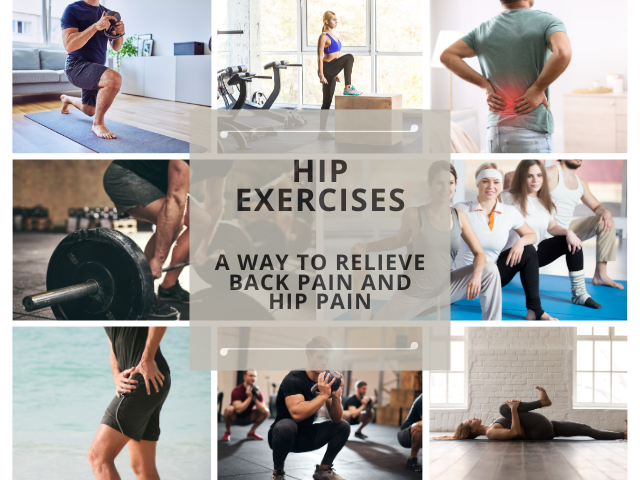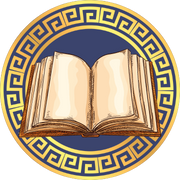How Bronze Era Bodybuilders Exercised

Short History of Early Bodybuilding
In the early history of body building before its height of popularity at the start of the 1950's, top bodybuilders before the 1940's had the body of Greek Gods despite the lack of proper machinery, advanced equipment and the popularization of effective exercises. Even steroids was not a thing back then.
How Bodybuilders from the Bronze Era Exercised
The majority of the exercises of bodybuilders from the Bronze Era consist of vertical movements (basically any activities that requires you to be standing), like squats, deadlifts, and standing shoulder presses, which contribute to their incredible physique.
Because of the lack of benches and racks, heavy movements like the squats had to be lifted from the ground, either by doing the Steinborn lift or cleaning the bar (the exercise). This explains their well-developed shoulders.
Eugen Sandow Posing in 1903
Because of the lack of horizontal movements like the bench press, chess fly, and dumbell row (the exercises were not as popular or known as they are now), their chest are underdeveloped compared to any other parts of the body.
This, of course, does not mean they look bad or goofy; I mean, just look at Eugen Sandow! He has the physique of a Greek God! These are the type of physiques the majority of man who started bodybuilding wants to achieve.
Exercises for the Upper Body
Cleaning the Bar (The Exercise)
Demonstration of a Power Clean
Key Muscular Targets:
- Primary: Glutes, Quads, Calves, Deltoids, Traps (the upper back muscles), and core muscles.
- Secondary: Forearms and Calf muscles.
This exercise is where you lift a barbell from the ground to a racked position at the shoulders in one smooth motion.
In this position, you can either do front squats or/and overhead press; Alternatively, you can also do back squats (traditional squats) by performing the overhead press in this position and rest the bar on your back, be careful not to rest it on your neck if you do so.
Overhead Press
Demonstration of Overhead Press
Key Muscular Targets:
- Primary: Deltoids and Triceps.
- Secondary: Traps, Rhomboids, and Core muscles.
Start from performing a clean then in that position, push the bar overhead with the focus on your lats and shoulders.
You can of course use a squat rack to get into position instead of performing a power clean, but if you want the same experience what bronze-era bodybuilders have gone through, then start the exercise by picking the bar off the ground.
Demonstration of a Dumbbell Overhead Press
If you wish to use dumbbells, kettlebells, or simply weight plates, then perform the exercise standing up so as to engage your core muscles.
Barbell and Dumbbell Rows
Demonstration and tutorial for performing a Barbell Row
Key Muscular Targets:
- Primary: Lats, Traps, Rhomboids.
- Secondary: Forearm, and Core muscles.
When performing this exercise be sure to keep your back straight and chest up. Your back muscles, primary the lats, traps, and rhomboid should be working the hardest.
Pull-Ups
Demonstration of Pull-ups
Key Muscular Targets:
- Primary: Lats, Traps, Rhomboids.
- Secondary: Forearm, Deltoids, and Core muscles.
To do this exercise, you would need something to hang on, preferably from a pull-up bar or a squat rack that has a pull-up bar.
If you don't have a pull-up bar, either find a branch connected to a tree that is strong enough to hold you or do a another exercise that targets similar muscles.
Other variations consist of chin ups, a wide, narrow grip, and an alternate grip. Experiment and explore what feels right.
Exercises For the Lower Body
Front squats
Demonstration of a Front Squat
Key Muscular Targets:
- Primary: Quads and Glutes.
- Secondary: Hamstrings, Adductors (inner thigh muscle), Core muscles and Rotator cuff muscles.
As mentioned before, bronze-era bodybuilders did not have squat racks available to them; to perform a front squat, they would have to power clean the barbell into position (really close to the neck).
For me, I find that the collarbone and shoulders are the perfect place for the bar to rest when performing front squats; It might be different for you, so it is best to practice the movement first with the bar alone (no weight plates).
The hardest part of this exercise is that it requires you to have flexible elbows (flexible enough) so that you can let the middle of the barbell rest on your collarbone and shoulders safely.
Fortunately, there is a variation for the front squat that requires little elbow flexibility called the cross-arm variation. The sad thing is that it is harder to get into position through power cleaning the bar, so I suggest you use a squat rack if it is available to you.
Demonstration of the Cross Arms Variation for the Front Squat
To practice, either perform the exercise with the bar only (without weight plates) or perform the exercise with bodyweight alone.
Back Squat (Traditional Squat)
Demonstration for the Back Squat (Traditional Squat)
Key Muscular Targets:
- Primary: Quads, Hamstrings, and Glutes.
- Secondary: Adductors (inner thigh muscle), and Core muscles.
While both the front squat and back squat heavily involve the quads and glutes, the back squat tends to place slightly more emphasis on the hamstrings due to the more inclined body position.
For me, I find greater success in performing front squats than in back squats, probably due to the fact that I feel more stable. If you do feel like that your balance is off, try performing front squats instead, maybe you will find greater success on it like I did.
Performing this exercise with dumbbells and other gym equipments is also possible. Simply stay at the start of the position of a shoulder press and start squatting down and up.
If you have trouble doing a power clean and don't have a squat rack nearby, you can try attempting the Steinborn Lift instead, it uses angles and leverage to get yourself into a position to do a back squat.
Demonstration of the Steinborn Lift
Only perform the Stenborn Lift when your floor is matted, otherwise your floor tiles will be scratched, damaged or broken.
Single-leg Squat (Pistol Squat)
Pistol Squat Demonstration
Key Muscular Targets:
- Primary: Core muscles, Quads and Glutes.
- Secondary: Other leg muscles.
Despite the exercise's lack of weight, it is harder to perform than most weighted exercises, especially if you are on the heavier side.
Deadlifts and its other variations
Demonstration for the Conventional Deadlift
Key Muscular Targets:
- Primary: Quads, Hamstrings, Glutes, and Core muscles.
- Secondary: Traps and Rhomboids.
The main driver of the lift should be the hips and quads, while the glutes and other core muscles work to maintain your balance to avoid injuries and energy leaks.
Proper Posture for deadlifting:
- Not too narrow or wide stance: Experiment on a lighter weight on how far apart your feet feel the most comfortable performing the deadlift.
- No rounding of back: Rounding your back will reduce stability and risks injuring your spine.
- Look straight ahead, not up or down: Where your head is facing will affect weight distribution thus your balance. It is best to keep the balance fair by looking straight ahead.
- Drive with your hips and legs, not with your back: The deadlift is not intended as a back exercise, don't turn it into one. (If you wish to train your back with a barbell, then do a barbell row instead)
- Brace your core: Failing to brace your core can lead to a loss of stability and increase the risk of lower back injury. To brace properly, take a deep breath through you stomach while flexing your stomach or abs slightly.
Performing this exercise should not result in lower back pain; if you are experiencing lower back pain, you are performing the exercise wrong.
If you are experiencing lower pack pain or hip pain, this blog post might be of help to you.

What did we learn?
- If we want the physique of a Greek God, focus more on vertical movements than horizontal movements.
- Bronze-era bodybuilders did not have squat racks or benches; they picked up their weights from the ground for each exercise for the majority, if not all, of the time.
If you have trouble finding time to go to the gym, then I suggest you create yourself a mini-home gym. In the long run, it'll be cheaper since you don't have to pay for travel expenses and a gym subscription.

Copyright ©2024 by Marshall Vulta
Last Revised: July 12, 2024





Comments ()